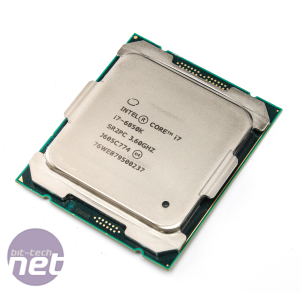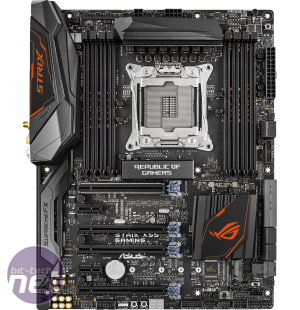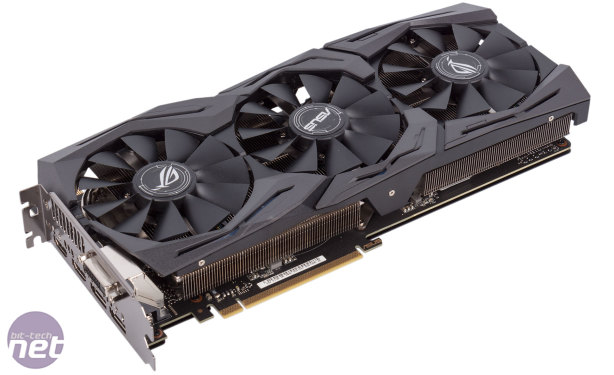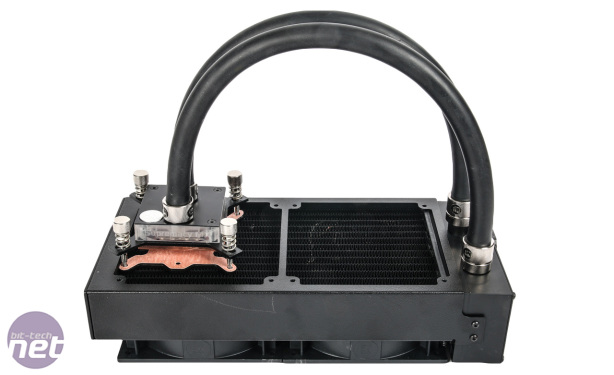
Premium Player
Money isn't really considered an object in this build – it's for enthusiasts with deep wallets aiming for a premium VR experience or even 4K gaming. That said, we're not looking to blow money unnecessarily – this definitely isn't just about choosing the fastest and most expensive components without thought, as anyone can do that. As ever, see below for our justifications and potential alternatives.| Product | UK price (inc VAT) | US price (ex tax) | |
| CPU | Intel Core i7-6850K | £510 | $500 |
| Motherboard | Asus ROG Strix X99 Gaming | £300 | $335 |
| Memory | 16GB (4 x 4GB) 3,000MHz DDR4 | £115 | $115 |
| Graphics card | Asus GeForce GTX 1080 Strix Advanced 8GB | £660 | $670 |
| PSU | SilverStone Strider Platinum 850W | £140 | $150 |
| CPU cooler | EKWB EK-XLC Predator 240 | £180 | $180 |
| Storage (primary) | Samsung 960 Evo M.2 NVMe SSD | £230 | $250 |
| Storage (secondary) | 1TB SATA 6Gbps 2.5in SSD | £200 | $240 |
| Case | In Win 805 | £140 | $160 |
| Total price | £2,475 | $2,600 |
 Using the X99 platform is perhaps controversial from a pure gaming point of view, as honestly the Z170 platform with a Core i7-6700K or even a Core i5-6600K will do just as well in most titles (see the previous page for recommendations there). You need to consider whether you truly need the extra cores and PCI-E bandwidth offered by X99, for example if you constantly do heavily multi-threaded workloads or storage-intensive tasks. For the sake of differentiation, we're assuming you do. In that case, the Core i7-6850K is easily the best CPU of the current X99 bunch. It's the least expensive one that nets you the full 40 PCI-E 3.0 lanes, and the step up to eight or 10 cores is extremely expensive and only beneficial to a very small selection of users.
Using the X99 platform is perhaps controversial from a pure gaming point of view, as honestly the Z170 platform with a Core i7-6700K or even a Core i5-6600K will do just as well in most titles (see the previous page for recommendations there). You need to consider whether you truly need the extra cores and PCI-E bandwidth offered by X99, for example if you constantly do heavily multi-threaded workloads or storage-intensive tasks. For the sake of differentiation, we're assuming you do. In that case, the Core i7-6850K is easily the best CPU of the current X99 bunch. It's the least expensive one that nets you the full 40 PCI-E 3.0 lanes, and the step up to eight or 10 cores is extremely expensive and only beneficial to a very small selection of users.16GB of 3,000MHz DDR4 remains the de facto memory choice – opt for a quad-channel (4x4GB) kit to make full use of the chipset's bandwidth while still leaving four slots free for future upgrades.
 Our motherboard of choice here is the Asus Strix X99 Gaming. It comes with all the latest features, including M.2, U.2 and USB 3.1 Type-C as well as built-in Wi-Fi and customisable RGB lighting. Overclocking potential is great, as is the EFI, but it doesn't push pricing into ridiculous territory. If you're determined to stick to Z170 but still have a fair amount of cash spare, might we also suggest the £230 MSI Z170A MPower Gaming Titanium or £270 Z170A XPower Gaming Titanium – lavish, yes, but arguably the best looking boards around and also crammed with features.
Our motherboard of choice here is the Asus Strix X99 Gaming. It comes with all the latest features, including M.2, U.2 and USB 3.1 Type-C as well as built-in Wi-Fi and customisable RGB lighting. Overclocking potential is great, as is the EFI, but it doesn't push pricing into ridiculous territory. If you're determined to stick to Z170 but still have a fair amount of cash spare, might we also suggest the £230 MSI Z170A MPower Gaming Titanium or £270 Z170A XPower Gaming Titanium – lavish, yes, but arguably the best looking boards around and also crammed with features.The Asus GTX 1080 Strix Advanced has a slightly lower overclock than the OC edition we reviewed, but otherwise it's the same and it's more readily available and considerably less expensive. It's packed with features to satisfy enthusiasts, including the unique FanConnect which lets you control system fans based on the GPU temperature, including the ability to switch them off entirely. The RGB lighting will also be a perfect match for the Asus motherboard. A possible alternative is an SLI GTX 1070 combination, but it's driver- and game-dependent whether it'll beat a GTX 1080.
The 512GB Samsung 960 Evo NVMe SSD combines high capacity storage with blistering speeds. Chuck in the cheapest 1TB-class SSD going for bulk storage in a small, silent and good looking package (well, better looking than a mechanical drive anyway).

Based on our experience with the 1,000W model, the SilverStone Strider Platinum 850W will be an excellent PSU. Efficiency is sky high, and you get maximum cable routing flexibility with fully modular cables. The wattage is enough for any future dual-GPU setup too.
The EKWB Predator 240 is pricey, yes, but it's also the best all-in-one liquid cooler we've seen. Its build quality and performance are outstanding, and it can be tuned to very low noise levels. It's also compatible with custom water-cooling gear, giving you potential to expand your loop in the future. Just make sure you're buying the 1.1 revision. You may not need quite as powerful a cooler if you go for Z170, by the way.

There were many cases we could have chosen here, but the In Win 805 is very classy and well suited to a system like this. Note, however, that your radiator will be installed at the front and there isn't much room for additional water-cooling hardware. Honorable mentions here include the new Corsair Crystal Series 460X and the older but still awesome Phanteks Enthoo Luxe. That said, aesthetics are likely to be an overriding concern for case selection here, so feel free to branch out if there's something you're in love with.
The total hardware cost of around £2,500 is very steep here, but this is a system bound to induce envy in onlookers. There are plenty of places where you could save money, but equally many where you could spend considerably more (10-core CPU and dual GTX 1080s, anyone?). We think this strikes a decent middle ground and represents the finest components we've tested or are aware of. Z170 is definitely a very viable option instead – consider mixing and matching components from this page and the previous one if that's your platform of choice.

MSI MPG Velox 100R Chassis Review
October 14 2021 | 15:04








Want to comment? Please log in.